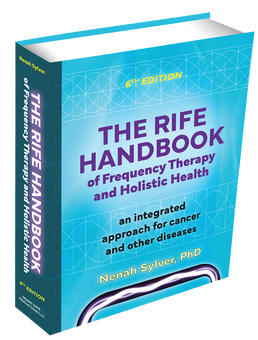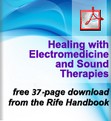Free Download, Appendix C
Healing with
Electromedicine
and Sound Therapies

Introduction
In the 1960s, counterculture hippies were urging us to give peace a chance (great advice). To expedite that process, it was helpful to have “good vibrations”—considered so important that the Beach Boys wrote a catchy song with this title. It was easy to tell who had good vibes and who didn’t. An optimistic, considerate person was considered “high frequency,” while a pessimistic, disagreeable individual was “low frequency.” Not surprisingly, everyone wanted to be around the folks who had good vibes.
Colloquialism aside, saying that someone is “high frequency” is based on legitimate science. Every molecule, cell, living body, and object is comprised of energy that manifests as physical matter. Some of that energy is detectible as frequencies that belong to one or more radiation bands in the electromagnetic spectrum. And these frequencies correspond to biochemical and biological processes in the body.
In the healing arts, there are different ways to affect matter. With conventional medical care, the chemical, functional, and/or structural change in organs, glands, and other tissues are created either through biochemical manipulation (drugs) or physical manipulation (such as surgery). With electromedical therapies, healing is achieved by working with the electromagnetic radiation (emissions) and related energy fields that form, and are emitted by, physical matter. Basically, electromedical devices produce and focus specific frequencies that can be in the form of electromagnetic fields, electrical current, magnetism, visible light, heat, or other energy.
Although electromedicine is widely used in Europe, it is less known in the United States. . . .


